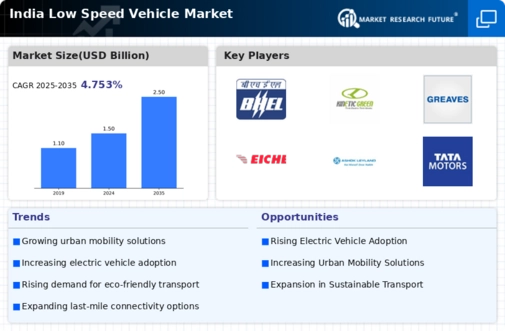The India Low Speed Vehicle Market is witnessing significant growth driven by increasing urbanization, demand for eco-friendly transportation solutions, and favorable government initiatives focusing on electric mobility. The competitive landscape in this segment is characterized by a mix of established players and emerging startups that are enhancing their product offerings to cater to the diverse needs of consumers. Companies in this market are primarily focused on innovation, cost optimization, and sustainable practices to enhance their market presence.
As the demand for low-speed electric vehicles rises, market participants are strategically investing in research and development, partnerships, and strengthening their supply chains to establish a competitive edge.Tata Powers has emerged as a formidable player in the India Low Speed Vehicle Market, leveraging its extensive experience in energy and infrastructure. The company's strengths lie in its robust supply chain and an established customer base, which allows it to effectively address the growing demand for electric vehicles. Tata Powers is recognized for its focus on sustainability, offering eco-friendly charging solutions that cater to low-speed electric vehicle owners.
Additionally, the company has invested in building a network of charging stations across urban regions, significantly contributing to the convenience and accessibility of electric mobility for consumers. This strategic positioning not only enhances its market presence but also strengthens customer loyalty and brand recognition in an increasingly competitive landscape.Bharat Heavy Electricals Limited, commonly known as BHEL, is another key player in the India Low Speed Vehicle Market. BHEL has successfully ventured into the electric vehicle sector by developing advanced technologies and key products aimed at low-speed vehicles.
The company emphasizes research and development, which has enabled it to innovate and provide efficient electric drives and components that meet the specific needs of this vehicle segment. BHEL's strengths include its established reputation in the power and industrial sectors, which aids in gaining credibility and trust among consumers and partners. The company has also pursued strategic collaborations and partnerships, facilitating technology sharing and enhancing its product offerings. These initiatives, along with a focus on local manufacturing and sustainability, position BHEL as a vital contributor to the advancement of low-speed vehicles in the Indian market.









